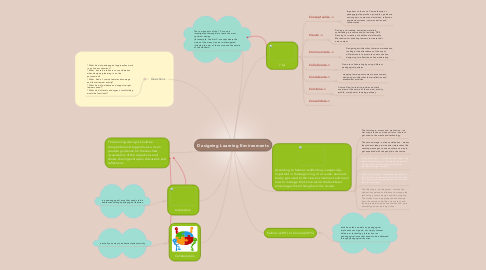
1. The components of the 7 Cs can be investigated thoroughly to reach the most optimum design (for example, the first C- concept where the vision of the meant course is investigated including the aim of the course and the nature of the students).
2. Interaction
2.1. is a pedaogogical issue that needs to be addressed through pedagogical theories.
3. Collaboration
3.1. is usually one way to enhance student activity
4. Questions
4.1. * What kind of pedagogical approaches work in on line environment ? * What has to be taken in to consideration when designing learning in on line environment? * What kind of course features encourage and foster learner activity? * What kind of guidance and support might learners need? * What kind of levels and types of scaffolding would be functional?
5. The learning design should be compatible and supportive so it can provide guidance for the teachers, visualization of the objectives and allows sharing and open discussion and reflections
6. 7 Cs
6.1. Conseptualise ->
6.1.1. Important to focus on Course features ->: pedagogigal approches, principles, guidance and support, content and activities, reflection and demonstration, communication and collaboration.
6.2. Create ->
6.2.1. Finding and creating interactive materials, undertaking a resourse audit of existing OER Planning for creation of additional multimedia Mechanism for enabling learners to create their own content
6.3. Communicate ->
6.3.1. Designing activities that foster communication, looking at the affordances of the use of different tools to promote communication, designing for effetctive online moderating
6.4. Collaborate->
6.4.1. Promote collaborating by using different pedagogical patterns
6.5. Considerate->
6.5.1. mapping learning outcomes to assessment, designing activities that foster reflection and assessment activities
6.6. Combine->
6.6.1. Course View (so that it provides a holistic overview of the nature of the course), activity profile, story board, learning pathway

